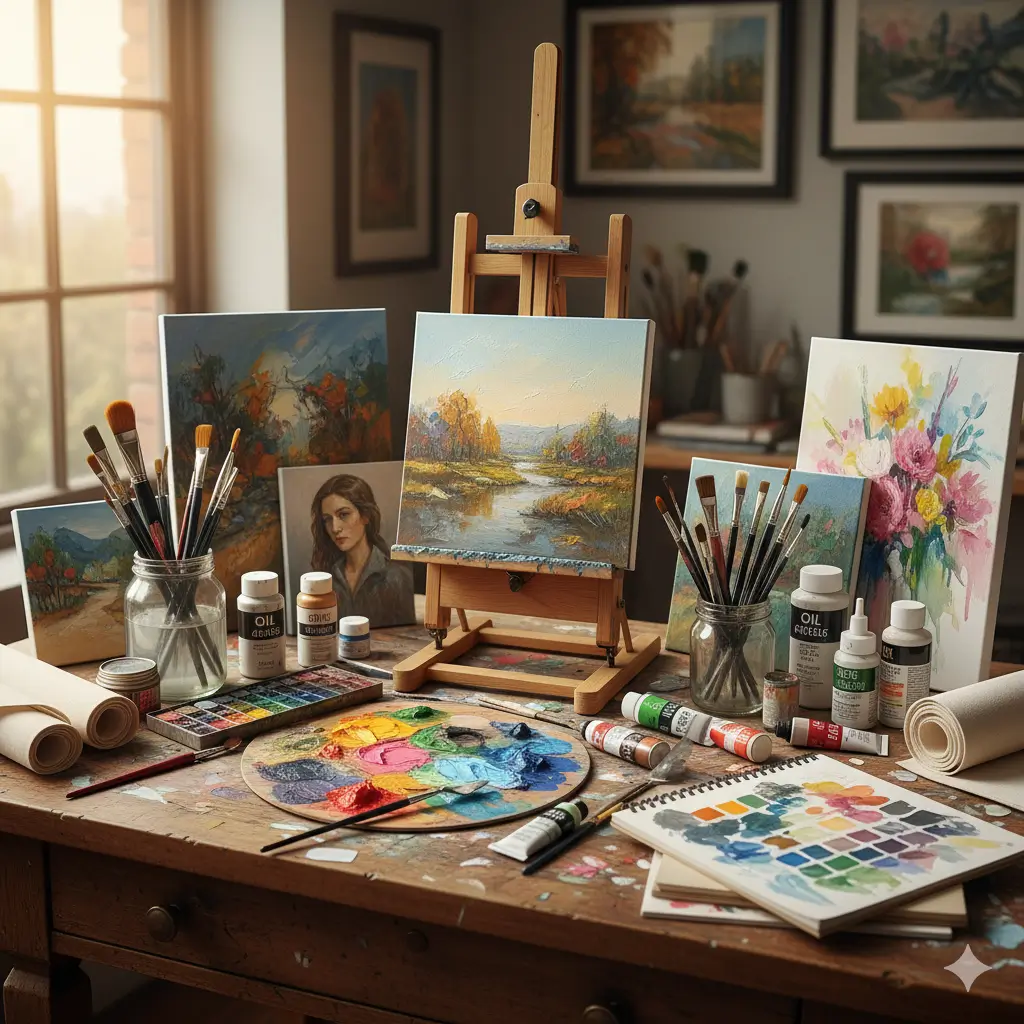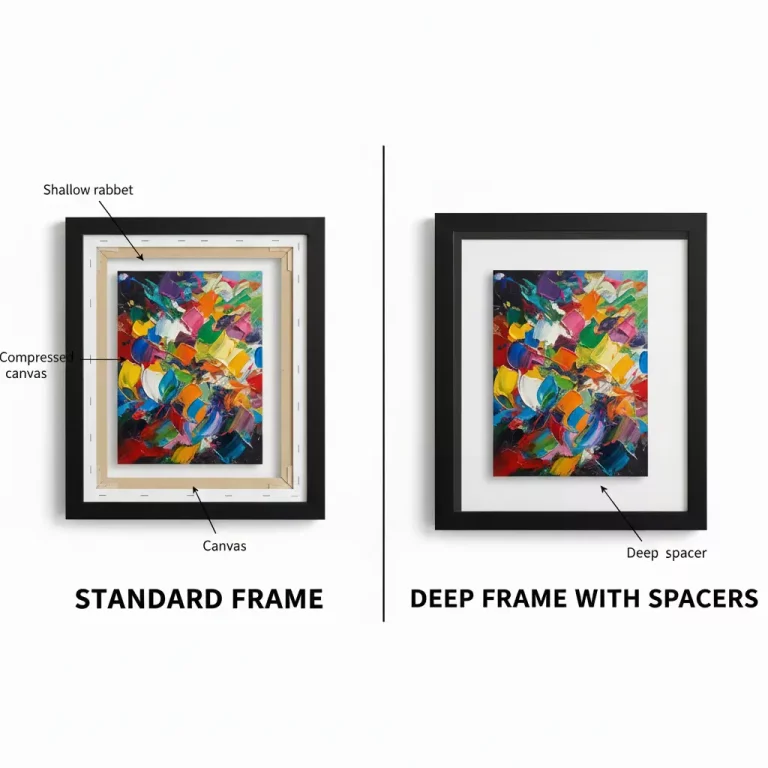Introduction
Canvas painting has captured the imagination of artists and art lovers for centuries. Whether you are a beginner dreaming of your first brushstroke or an experienced artist eager to refine your craft, canvas painting offers limitless possibilities for personal expression, home décor, and even professional success. This guide is your complete resource for mastering canvas painting—from choosing your materials, understanding techniques, and finding creative inspiration, to displaying your finished masterpieces beautifully.
What is Canvas Painting?
Canvas painting is the process of creating artwork using paints, brushes, and other tools on a stretched piece of fabric (typically cotton or linen) called canvas. It is a foundational art form embraced by old masters and modern creators alike. Canvas paintings are known for their durability, rich color, and professional look, making them the medium of choice for everything from classic landscapes to contemporary abstracts. To explore modern trends, see What is Contemporary Canvas Painting? A Guide to Modern Styles.
Types of Canvas for Painting
Choosing the right canvas can transform your painting experience. Here’s a quick comparison:
| Canvas Type | Description | Best For |
| Stretched Canvas | Pre-stretched on wooden bars, often pre-primed | Ready to use, ideal for all skill levels |
| Canvas Panels | Fabric mounted to a board, portable, and affordable | Practice, studies, and outdoor painting |
| Canvas Pads/Rolls | Sheets or rolls of primed canvas | Custom sizes, sketching, practice pieces |
| Linen vs. Cotton | Linen is durable and smooth, cotton is versatile and budget-friendly | Pros often prefer linen for longevity |
For guidance on size and material, see Cotton vs. Linen: Choosing the Right Canvas Fabric for Your Painting.
Essential Materials for Canvas Painting
Start with these must-have supplies:
- Paints: Acrylics (versatile, quick-drying, beginner-friendly), oils (blendable, rich finish), or specialized watercolors
- Brushes: Flat, round, filbert, fan—each for unique marks and techniques
- Palette: Wooden, glass, or plastic for mixing colors
- Easel: Holds your canvas at the right angle and height
- Palette Knives: Essential for mixing paint and creating bold textures
- Rags or Sponges: For blending, texture, and clean-up
- Gesso/Primer: Prepares the canvas surface for painting
- Varnish/Sealant: Protects your finished artwork
For a detailed list of all must-have supplies, see The Essential Art Supplies List for Every Aspiring Painter.
Setting Up Your Workspace
A creative, organized environment will help your ideas flow.
- Choose a space with natural light to reveal true paint colors.
- Ensure good ventilation when working with oils or solvents.
- Protect work areas with drop cloths or plastic sheeting.
- Arrange supplies within easy reach for efficiency.
- Sit or stand comfortably, adjusting your easel to avoid fatigue.
Canvas Painting Techniques
Basic Techniques
- Underpainting: Create an initial monochrome sketch to guide the composition.
- Layering: Build paint in layers, moving from background to foreground.
- Blending: Use a damp brush for soft transitions, especially in skies and skin tones.
- Dry Brush: For texture or highlighting details.
- Glazing: Apply transparent paint for luminous, layered color in oils and acrylics.
- Scumbling: Brush a thin, broken layer over a dry area for atmospheric effects.
- Impasto: Apply paint thickly for bold, textured brushwork.
- Sgraffito: Scratch through wet paint to reveal dried layers or canvas beneath.
For creative inspiration and various painting styles, explore 20 Beautiful Canvas Painting Ideas to Inspire Your Next Creation.
Advanced and Creative Approaches
- Palette Knife Painting: For expressive marks and three-dimensional effects.
- Mixed Media: Incorporate collage, markers, pencil, or ink for unique textures.
- Pouring and Dripping: Achieve abstract, spontaneous effects.
- Triptychs and Panel Sets: Learn “how to” and style multi-piece sets with Triptych Wall Art: How to Choose and Style 3-Piece Canvas Art.
Step-by-Step: How to Paint on Canvas
- Prepare the canvas: Apply additional gesso if needed and let it dry completely.
- Sketch your design: Use a pencil or thin paint to outline your composition.
- Block in basic colors: Start with large shapes and light tones.
- Add details: Build up layers, deepen shadows, and define highlights.
- Let layers dry: This is crucial, especially for oils and thicker acrylics.
- Final touches: Use small brushes or a palette knife for crisp lines and textures.
- Protect your work: Once dry, seal with varnish to ensure longevity.
For more on finding reference or creative ideas, see Where to Find Stunning Canvas Painting Images and Inspiration.
Creative Ideas and Inspiration
- Landscapes: Experiment with colors from nature—sunsets, mountains, flower fields
- Abstract Art: Play with colors, shapes, and textures for emotional impact
- Portraits and Figures: Refine your observation and anatomy skills
- Still Life: Arrange everyday objects for practice and beauty
- Try for the bedroom: 15 Calming Canvas Painting Ideas for a Serene Bedroom
- For the living room: How to Choose the Perfect Canvas Painting for Your Living Room
- Explore focal points: 25 Living Room Art Ideas to Create a Stunning Focal Point
Finishing and Preserving Your Canvas Paintings
- Wait for paint to dry completely before sealing.
- Use a removable varnish to protect from dust, UV, and moisture.
- Frame your art or leave edges exposed for a modern look.
- Store in a cool, dry space and avoid direct sunlight.
If you’re planning a gallery wall, get layouts, frames, and display ideas from How to Create a Stunning Gallery Wall: Layouts, Frames, and Ideas.
Displaying Your Canvas Paintings
- Group canvases into a gallery wall for visual impact, as above.
- Try a themed photo wall with DIY Photo Wall: 12 Inspiring Ideas to Display Your Memories.
- Play with modern poster options using 10 Creative Ways to Decorate Your Home with Posters.
- Give attention to nature views with Framing Nature: How to Select the Best Wall Scenery Frames.
- For trending designs, check Top 10 Wall Print Design Trends to Watch This Year.
Common Mistakes and Troubleshooting
- Overworking paint can cause muddiness—take breaks between layers.
- Skipping primer leads to uneven paint absorption.
- Using incompatible supplies (e.g., oil paint on a non-oil-primed canvas) can ruin work.
- Not sealing finished art leaves it vulnerable to dust and fading.
For expert product judgment, refer to A Buyer’s Guide to High-Quality Posters: What to Look For.
Conclusion
Canvas painting is both an art and a lifelong adventure. With the right materials, essential techniques, and a little creativity, you can create canvas art that not only transforms walls but also moods and lives. Use this guide as your starting point, revisit key techniques, and always seek out new inspiration.
For deeper guides and helpful tutorials on any of these topics, check out the rest of our canvas and wall art blog collection.





